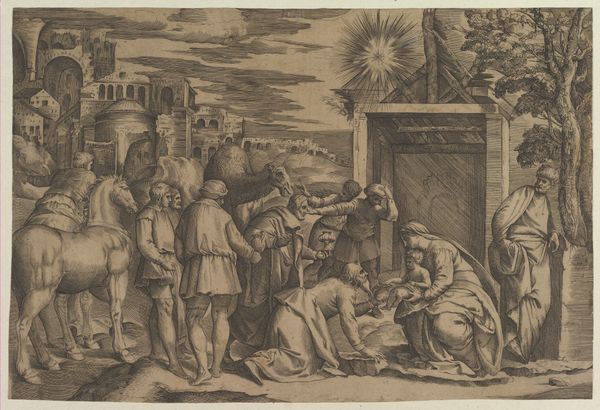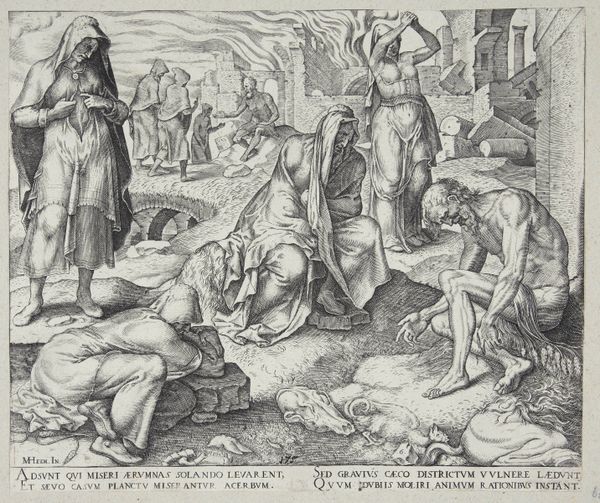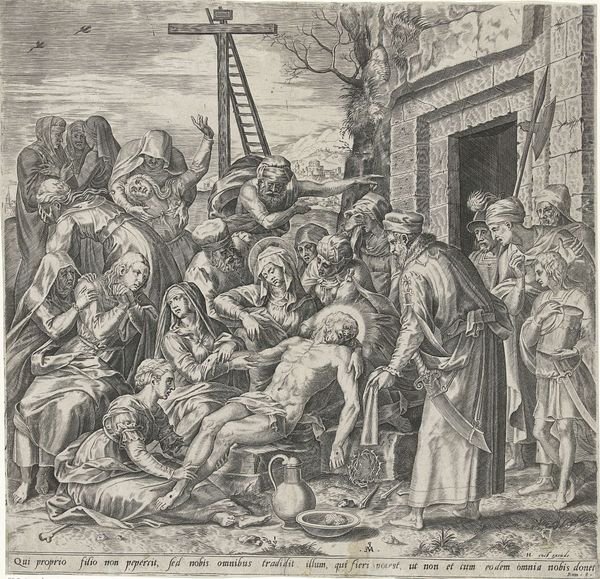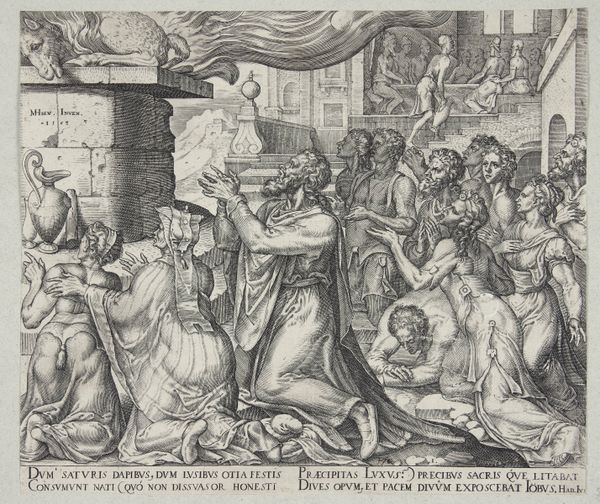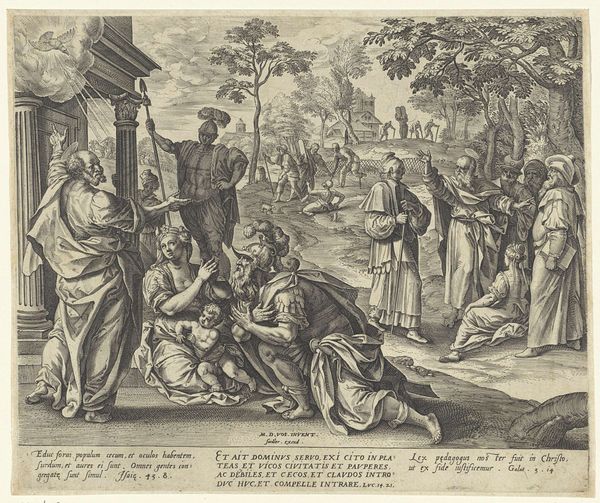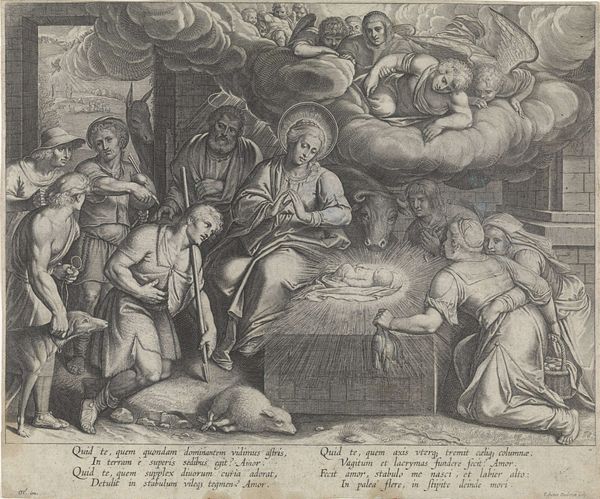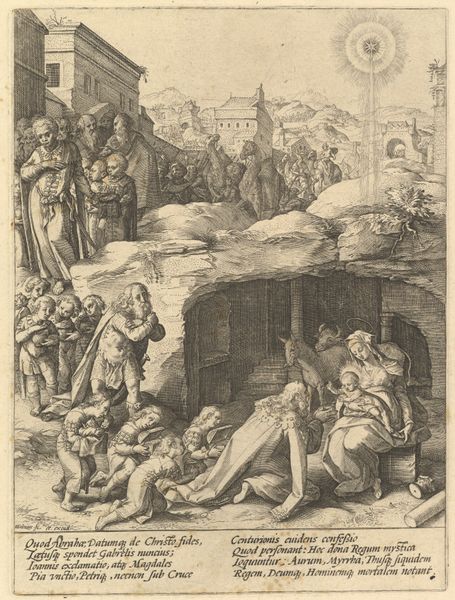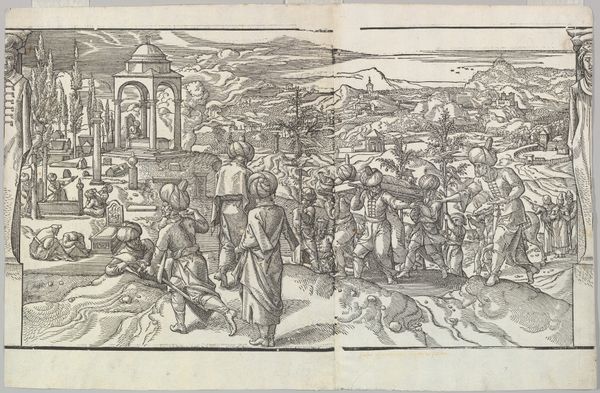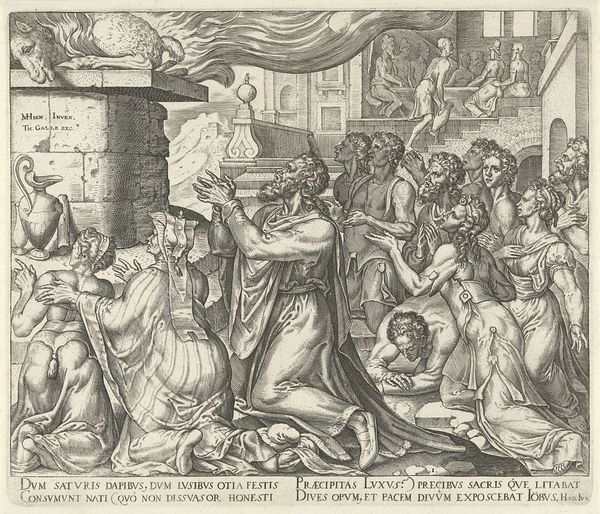
print, engraving
# print
#
mannerism
#
history-painting
#
engraving
Dimensions: 198 mm (height) x 265 mm (width) (bladmaal)
Curator: Welcome. Before us is Philips Galle's "St. Paul speaking with the women of Philippi," an engraving from 1582. It depicts a scene of early Christian conversion. Editor: Immediately striking! The crisp lines belie a subtle interplay of light and shadow. What stands out is the materiality of the scene itself; it's quite tactile for a print. You can practically feel the roughness of the rocks. Curator: Exactly. Let's unpack that further. Galle’s work operates within a complex nexus of religious and social power dynamics. Paul’s outreach to the women of Philippi, especially given their marginal social standing at the time, speaks to early Christianity's subversive potential. These women were perhaps drawn to a message that challenged existing hierarchies. Editor: And we see that focus materialized, don't we? The rendering of their clothes—you can almost determine the kind of textile each woman is wearing. And the tools used in creating this print--the burin's precise touch in detailing cloth, contrasted with broader strokes used to suggest the landscape beyond—reflects the varied labor involved in artistic production at the time. This makes me consider how images circulated, becoming tools for conversion through their availability. Curator: I agree. And thinking about distribution, how might this imagery reinforced existing patriarchal norms, even while seemingly empowering female converts? I see that vulnerability expressed through those subtly downcast eyes. Were they truly seen as equals? Or was this narrative, in its dissemination, another tool of social control, couching their agency within acceptable boundaries? Editor: That control can be understood as mediated through the object, the engraving itself, becoming almost a portable sermon that reflects, solidifies, and also possibly contradicts some societal narratives surrounding devotion and faith in the 16th century. Think about the act of viewing, holding, and sharing; that’s labor and devotional exercise, creating faith communities materially. Curator: A compelling argument indeed! I leave now with a heightened awareness to further unpack Galle's piece--from its immediate imagery all the way to its profound social implications. Editor: Agreed. It really gives one pause to reflect on the relationship between faith, craft, and our shared history.
Comments
No comments
Be the first to comment and join the conversation on the ultimate creative platform.


